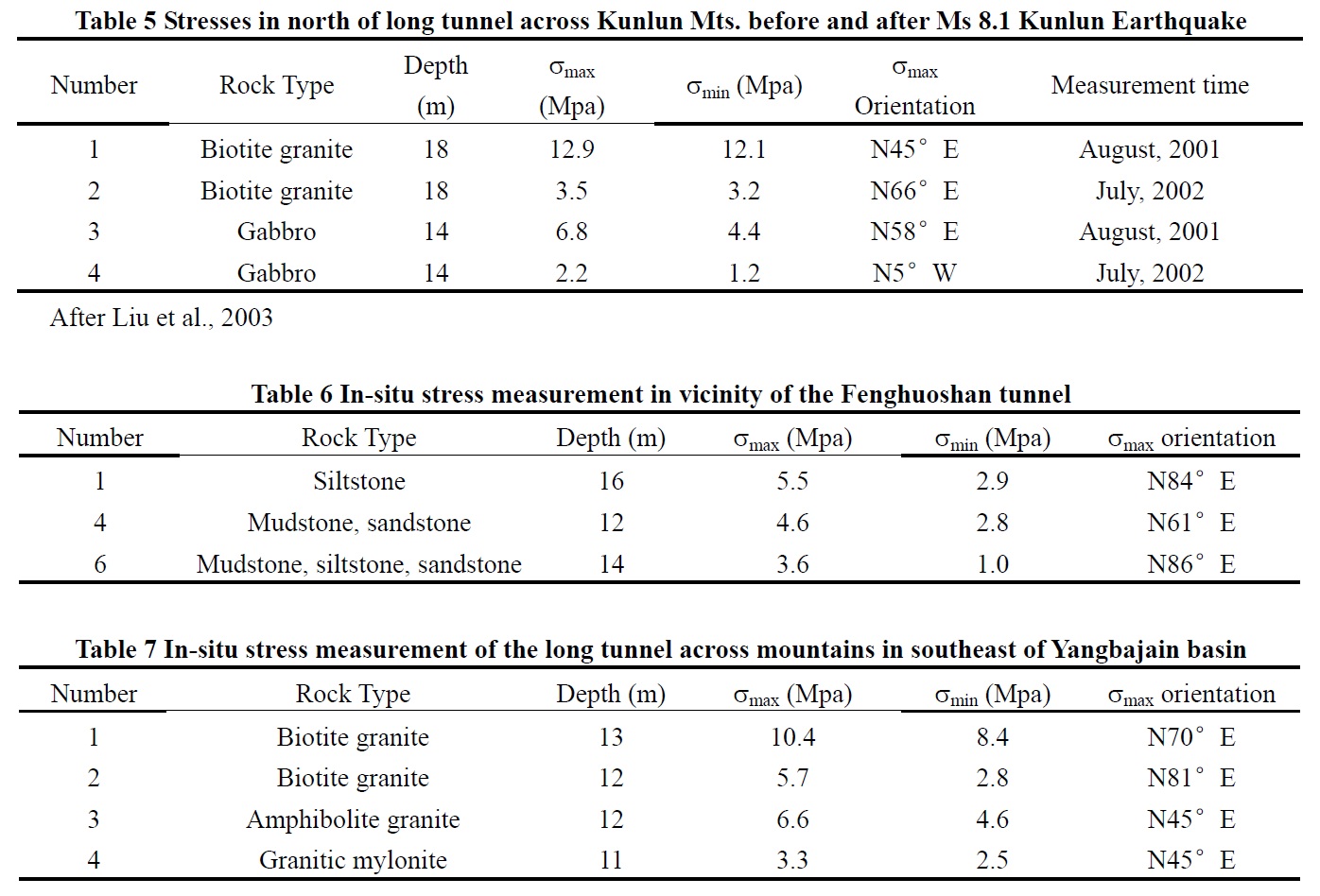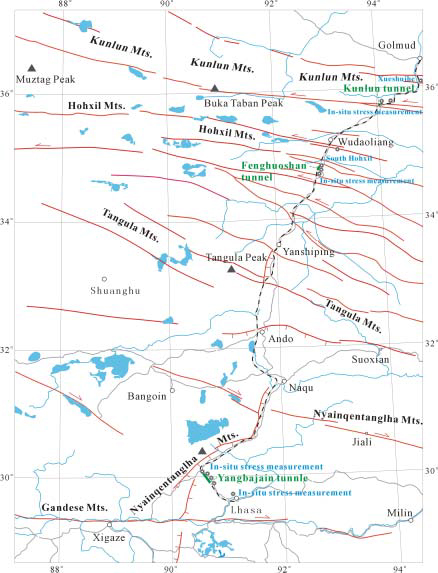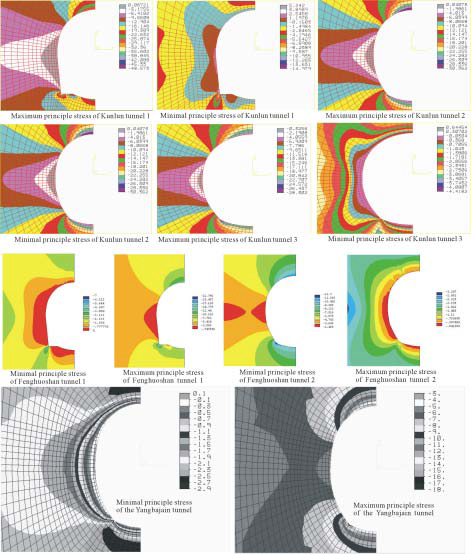Golmud-Lhasa Railway Geological Survey
IN-SITU STRESS OF TUNNELS AND STRESS CHANGE FROM THE Ms 8.1 KUNLUN EARTHQUAKE
In-situ stress in long tunnels across the Kunlun Mts., Fenghuoshan Mts. and mountains in southeastern Yangbajain basin were measured by compressional magnetism of the drilled rock column (Fig.21). These measurements well illustrated stress state of crust at the surface in the Tibetan Plateau (Table 5). The in-situ stress measured by the compressional magnetism technique before and after the Ms 8.1 Kunlun Earthquake occurred on November 14, 2001, revealed an evident stress decrease of strong earthquake in the northern Tibetan Plateau (Liao et al., 2003).
Maximum principle stress were 6.8-12.9MPa and orientated NE-NNE in August, 2001 before the earthquake, values several times higher than usual principle stress in western China. On November 14, 2001, the Ms 8.1 Kunlun Earthquake occurred. After the earthquake, the principle stress decreased to 2.2-3.5MPa in August 2002, a value 2-3 times lower than before the earthquake (Liao et al., 2003). The maximum principle stress of the Fenghuoshan and Yangbajain tunnels are both orientated NEE-NE. Maximum and minimal principle stress are 3.6-5.5MPa and 1.0-2.9MPa respectively in the Fenghuoshan tunnel (Table 6), and 3.3-10.4MPa and 2.5-8.4MPa respectively in the Yangbajain tunnel (Table 7).
The maximum and minimal principle stress are 3.1MPa and 1.1MPa in Xueshuihe valley of Middle Kunlun Mts., 6.8MPa and 3.2MPa in the southern Hohxil Mts. and 4.0MPa and 2.6MPa in the northern Lhasa granite (Wu et al., 2005).


Fig.21 Location of in-situ stress measurement along the Golmud-Lhasa Railway

Fig.22 Stress fields of long tunnels along the Golmud-Lhasa Railway




